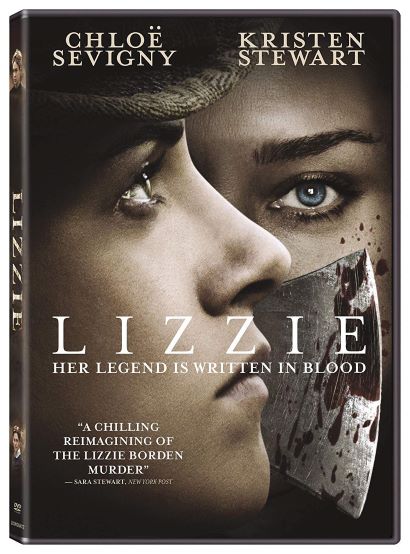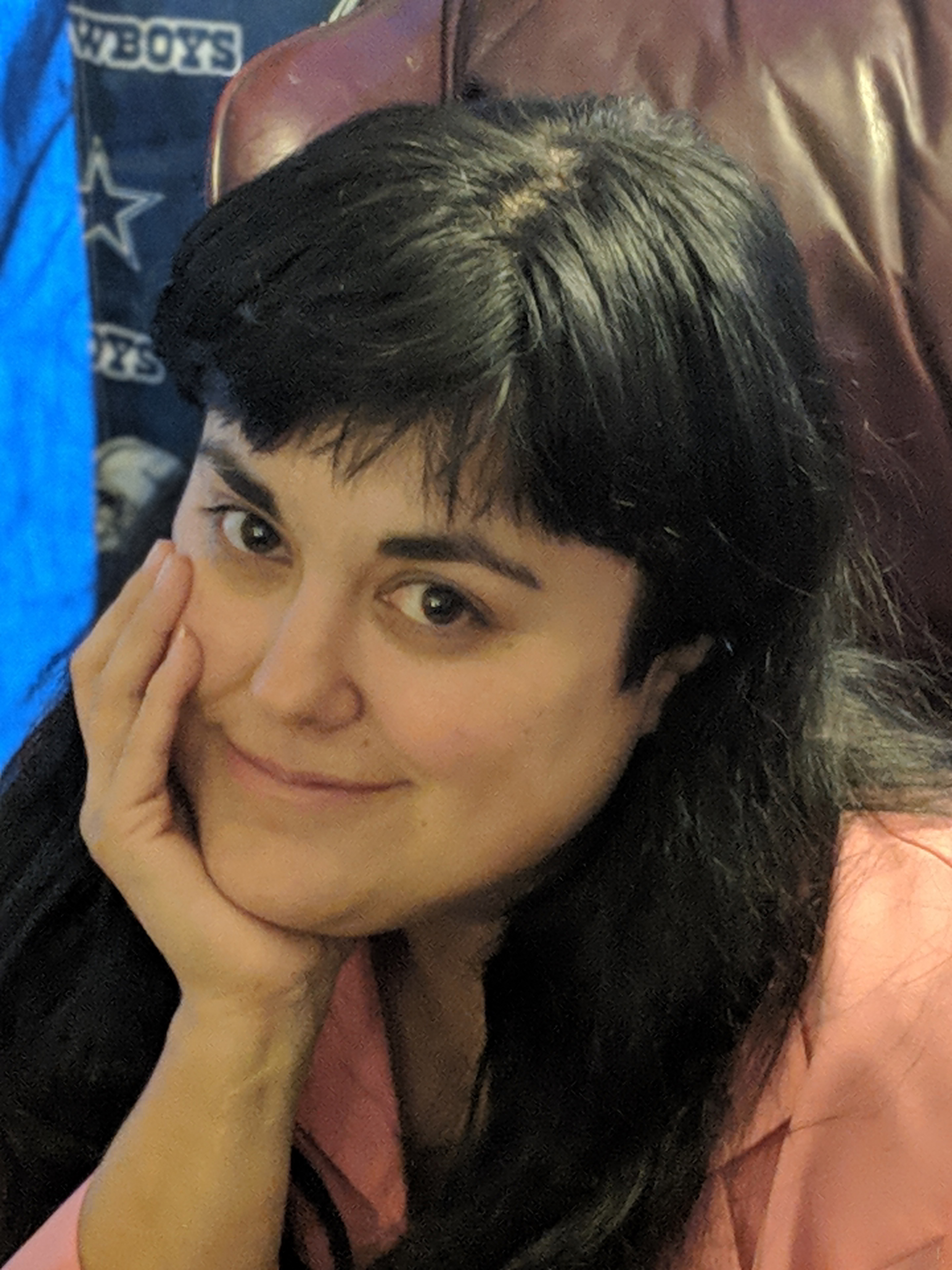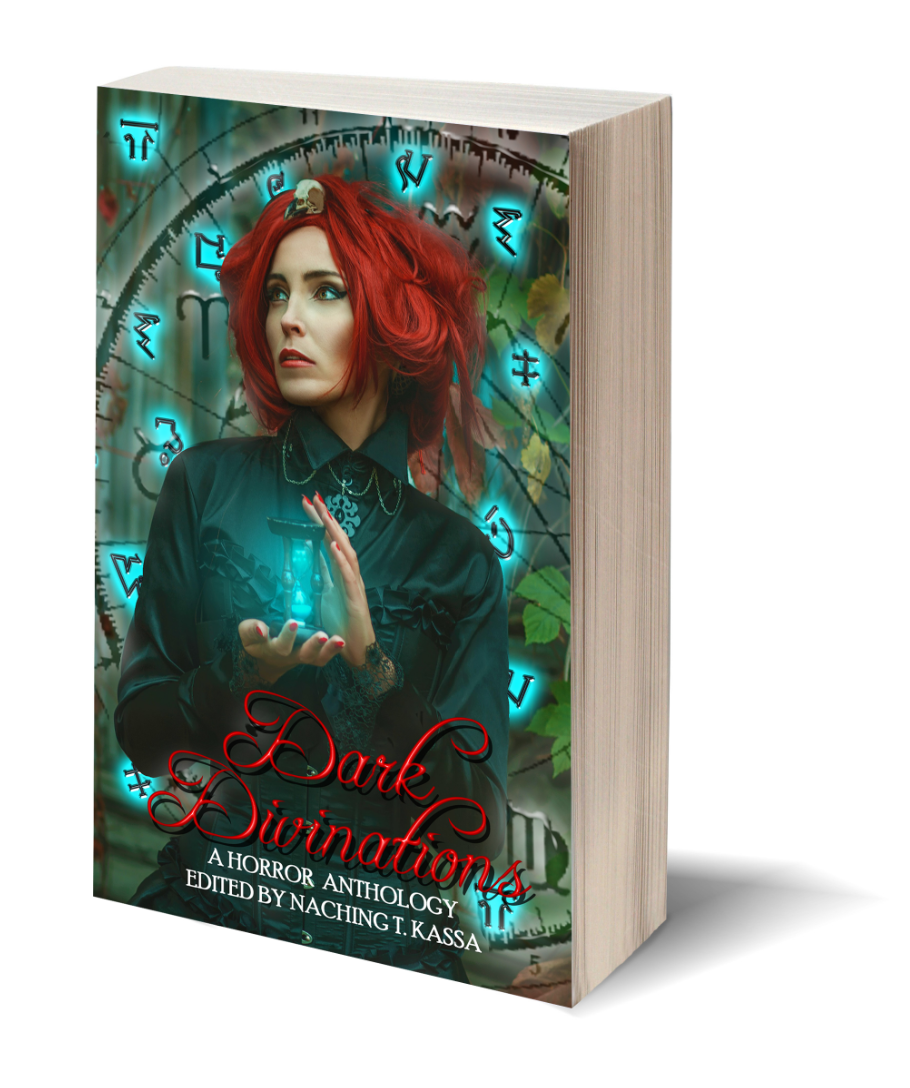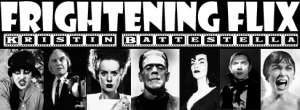
Penny Dreadful Season Three a Disappointing Finale
by Kristin Battestella
I loved me some Penny Dreadful. Previously, I watched the First Two seasons twice or more before writing my reviews a few months after I had simmered in the immersion of all things sophisticated Victorian macabre. I re-watched the entire series again when finishing this obviously late review, but Season Three’s still blindsiding finale and haphazard resolution of the series undermines the glorious potential that was yet to be found in Penny Dreadful.
Year Three hits the ground running with some delightful circumstances in “The Day Tennyson Died.” Our quirky little family of evil fighters – Vanessa Ives (Eva Green), Sir Malcolm Murray (Timothy Dalton), Ethan Chandler (Josh Hartnett), Victor Frankenstein (Harry Treadaway), and His Monster (Rory Kinnear) – is scattered about the globe from London to the Old West and Africa to the frozen north. Their townhouse base is shabby with covered furniture and piled mail before the titular solemn and lovely poetic references reconnect old friends with tenderness and sympathy. After all they’ve been through, those in London are allowed to stew and cry – unlike the unforgiving railroad and lawless land of the New Mexico Territory. Though blindingly bright compared to the British bleak, there’s an underlying ominous to the witches and werewolves among the lawmen. Letters from Africa with burials made right also find Chiricahua Indians in the most unlikely Zanzibar alley while faraway frozen trawlers debate cannibalism and melodies remind monsters of when they were men. Famous names face racism at Bedlam as pale minions with anemia excuses lurk. Penny Dreadful has a lot to do but does it with superb conversations, new allies, and bloody vignettes. “Predators Far and Near” adds vintage photography, jurisdiction technicalities, a modified barber’s chair for experimenting on patients, and fear of the gramophone cylinders recording one’s sin. Therapy confessions recount prior indiscretions, but the prescription for godless loneliness is doing something innocent and happy no matter how small. Women debate on light and dark souls while men bond over their love of daughters and a son not birthed to them but bound with their suffering. Talbot family history, ritual chanting, and colorful vision quests counter the sophisticated Victorian science lectures and whimsical memories of adventures the likes of 20,000 Leagues under the Sea. Unfortunately, our dreadfuls are more familiar with lunatics and monsters rather than childhood heroes, with Jekyll and Hyde-esque transformations on crazed victims, deceptively charming courtships, a wise Apache woman reminiscent of the fortune teller in The Wolf Man, and a desert full moon to aide one’s bone cracking escape.
Unholy alliances between witches and the Wolf of God continue in “Good and Evil Braided Be.” Is it the beast or angel, good or evil that’s the real persona? Does the mind create phantoms and demons to explain the darkness and pain? Do you bury the animal inside or unleash it? Between the werewolf curse, divided locales, tug and pull father figures, and hints of Hyde, Penny Dreadful creates superb dual themes alongside several racial moments and of the time derogatory Native American comments. Sophisticated light and dark visuals and good and evil motifs are interwoven against crudeness, triumphing over those who define what’s black and white or right and wrong solely based upon skin tone rather than soul. The audience isn’t hit on the head with the social commentary, but one scene beautifully addresses the sadly still lingering attitudes upfront. New, risky hypnosis techniques further retrace past darkness and despair in Episode Four “A Blade of Grass.” Memories and present offices blur in a dreamy act with current doctors and familiar faces in unexpected places uncovering new revelations of a forgotten padded white room. In camera foregrounds and backgrounds accent the confined or expanded four walls as needed with overhead views, zooms, face to face close ups, and wide angle warped. Finite descriptions of precious few details, amplified sounds, and demon shadows match the kindness of an orderly or the evils that await. Precious blankets are taken away amid growling, crying, straight jackets, and water torture. Can God find you in a place like this or are you alone? Our patient fears the evil within and wants to die over the betrayals and sins committed, yet the tender bonding with her jailer turned poetic advocate provides an unlikely compassion. Whether you can face yourself in the mirror or not, these fugue state manifestations overcome evil with the truth at Christmas in one excellent parable. The least amount of effects, minimal characters, and few locales leave nothing but the emotion and anguish upon their faces. It’s divine, just everything television should be and perhaps the best episode of the entire series.
And then, somehow, Penny Dreadful went to shit.
Series writer and creator John Logan hands Penny Dreadful over to new writers mid season – a maneuver suggesting a viable transition rather than leaving unknowns to resolve your planned finale with rushed characters and compressed stories. Andrew Hinderaker (Pure Genius) pens “This World Is Our Hell” with The West as a barren purgatory full of symbolic multi-layered pursuits on who the righteous should save or whom the evil would kill. Water is scarce among the grave sins and shame worn as redemption; forgiveness versus temptation comes in revealing fireside chats recounting past ambushes and the difficulty of serving multiple masters – fathers, duty, Lucifer. Unfortunately, these lofty topics are undone by nonsensical mysticism. Witches can summon snakes to conveniently wipe out pursuers but cannot heal injured mounts or conjure water and dying people somehow have enough energy for awkward evil sex after days of thirst. The Victorian mad science and desert shootouts jar in an anchor-less back and forth when the confrontations between our converging father figures are more interesting. Lengthy exposition on past horrors feels odd in a series that often shows rather than tells. Why not have an entire Talbot past hour the way “Closer than Sisters” showed us how Penny Dreadful really began? Otherwise the audience is left confused over who’s really at fault for the faithful turning evil. It was Ethan’s dad’s fault for making it the army’s fault who made the Apaches to blame??? Penny Dreadful always had pacing issues and uneven characters, but this Old West excursion could have ditched the dead weight characters and been back to London in half the time. I don’t think it is necessarily Hinderaker and newcomer Krysty Wilson-Cairns’ fault, but “No Beast So Fierce” throws even more at the screen with too many threads regarding who’s evil or who’s the law amid busy shootouts, vampire minions, Bedlam serums, how to kill a man tutorials, Egyptian wonders unrealized, and new steampunk introductions. What’s supposed to be important – monsters being kind to sick children or sassy sword wielding new characters? If the key to defeating evil is holding fast to loved ones, why has our family been apart all season? Perhaps one writer should have been responsible for one set of characters the entire year, as Dracula’s apparently content to wait out the cowboy adventure while other isolated and aimless immortal plans go round and round and pull Penny Dreadful apart at the seams.

Penny Dreadful has an innate melancholy – cemeteries, grave digging, mourning shrouds – but the dark romance is used for unnecessary preachy in “Ebb Tide.” Separated characters finally meet, but one knock on the door and a brief scene reconciling the past and present is not enough. Friends that could fill this empty manor and fight the bloodshed are pushed away while our team in the West doesn’t heed ancestral warnings. Despite insisting London is home, characters remain obstinate just for the sake of creating drama, leading to contrived betrayals and more speeches begging for the fast forward button. Touching conversations on who will bury whom are interwoven with weaker plots, straying from the core and repeating exposition we already know. Visions unite players who have been apart but such mystic conversations and wisdom on rescuing one another from darkness should have happened much sooner – two episodes ago, nobody cared. Krysty Wilson-Cairns writes the quick at forty-three minutes “Perpetual Night,” and it’s the shortest episode of Penny Dreadful when the series desperately needed more time. The boys rush back to Londontown amid foggy cityscapes, morbid voiceovers, tasty frogs multiplying, and rats amok. Dead wolves and toothy minions everywhere require swift blade work and fireplace pokers to stave off vampire infections – but no one thought to call Dr. Frankenstein away from Bedlam’s dungeon when people are said to be dying by the thousands? Penny Dreadful bites off more than it can chew, takes too long to achieve what matters, and spits out the excess when there’s no time left. Ironically, the “The Blessed Dark” finale also delays, saving choice moments with its stars rather than going full tilt with the dream hazy, bodies on hooks, and bats as sad lullabies over the special credits recap the sad state of our separate characters. It’s very exciting to see the reunions and werewolves fighting vampires in true monster mash up fashion as it should be – Dr. Jekyll passes by as Dr. Seward hypnotizes Renfield! As a season finale, this hour provides closing moments on some toiling plots. However, as a series finale, it barely resolves anything. Brief mentions on her destiny, his destiny, and previous prophecies don’t make sense anymore, and Victor literally bumps into the gang at Bedlam. The team is together again by accident! Major moments with his monsters earn one scene each, and none of those super strong immortals join the End of the DaysTM battle. Instead, bad ass walking down the street filler and a few ridiculously outnumbered pistols struggle with conveniently confusing action choreography. Bitter ties to the First Season become unrealized tangents, and new characters are inexplicably more steadfast than our original crew. Four episodes ago, life was worth fighting for but now isolated characters give up because the script says they should in a one hundred and eighty degree turn that’s painful to see end this way.
Vanessa Ives begins alone, a recluse living in squalor before rising thanks to words and wits with her therapist. Eva Green’s heroine cleans up and humbly restores the manor. Despite losing her faith, Vanessa is inspired by Joan of Arc’s confidence and says she will remain resolute. Oddly, she doesn’t seem as psychic or intuitive anymore and fails to recognize evil tendencies she previously pegged so astutely. It’s sad to see Vanessa open herself, revisiting innocent things that make her happy or having a man’s company once again end in terror. She’s willingly hypnotized to face her repressed psychiatry treatment, addressing her past doubts, regrets, and battles with Lucifer. “A Blade of Grass” shows her at rock bottom before a ray of hope and renewed prayers – if you believe in evil, then you must believe God is there to defeat it. Unfortunately, Penny Dreadful squanders the Lucifer issues, fast tracks Dracula, and circumvents Vanessa’s body and soul versus the fallen brothers with a past event cheating viewers out of a current victory. Vanessa can sense and see Kaetenay when the plot says so, but her lack of psychosexual possession and failed insights inexplicably have her give up despite knowing overdue help is on the way. Green saves this sloppy writing and deserved more hardware for Penny Dreadful. I don’t blame her if she recognized the tone had changed and was ready to depart. The series could have continued in searching for an evil Vanessa as an absent lead a la Blake’s 7 rather than two scenes with bad girl red eye shadow trying to make up for rushing to resolve Vanessa’s story. Josh Hartnett’s Ethan “Lawrence Talbot” Chandler is also not only reluctant to see his real father, but he’s angry at being adopted as Kaetenay’s Apache son. Ethan knows there is blood on his teeth and his soul deserving of punishment and wears his guilt on his sleeve. Unfortunately, his history comes from three different sources – so for all this New Mexico excursion, we don’t get a clear picture. The Wolf of God also spends about fifteen minutes being evil, standing up for Hecate over Malcolm because he won’t repent and belongs in hell. Ethan speaks evil prayers at the dinner table, but isn’t this the guy who’s Latin single-handedly exorcised Vanessa? His reciting of the Lord’s Prayer in the finale feels hollow thanks to his satanic reversal just a few episodes earlier. Was Ethan’s western escapade and Vanessa’s evil each meant to be it’s own season storyline? They both have a scene or two of darkness, and one moment in the finale doesn’t make up for Ethan’s back and forth. Meanwhile, Sarah Greene as Hecate travels in white, an unassuming Gibson girl who loves horses and animals but loathes people. She wants to be evil beside Ethan, but her powers are both handy or nonsense as needed. Hecate kills unnecessary to teach him a lesson and lingers too long in this uneven capacity – crowding an already busy Penny Dreadful while not being a character in her own right. The English Sean Glider (Hornblower) may be an unusual choice as a U.S. Marshall, but his crusty ways balance the British tidiness of Douglas Hodge as Inspector Rusk as they pursue Our Mr. Talbot. Rusk may ask for tea in the bar car and insist Scotland Yard Inspectors do not carry firearms, but he doesn’t underestimate the ruthless West. He begins to believe the Occult upon his case and does take up more violence as the blood on their path increases – before a thankless end, of course.
The beard is back for Timothy Dalton as Sir Malcolm, and even if he doesn’t know all the details, he’s ready to respect Wes Studi’s (Geronimo: An American Legend) Chiricahua Kaetenay if it will help save Ethan. Like an oasis in white in the mostly unlikely place, it’s wonderful when Malcolm and Ethan finally meet up for some shootout action. However, Malcolm really doesn’t have a whole lot to do this season beyond listening to Kaetenay. Most of his dialogue is responsive filler, and even before the surprise series finale, I suspected Dalton would not be returning for Season Four. You don’t keep a talented name without giving him quality writing, and Malcolm ends up repeating the same plot. Chasing after lost lamb Ethan, fighting a vampire to rescue Vanessa – he’s again saving his family even as his travels keep him from his home and any relationship with Victor. Malcolm could have returned to London post-Africa, maybe to meet Catriona sooner or dislike Dr. Sweet, as it’s a disservice to reduce him to little more than Kaetenay’s sidekick. That said, yes please to more of Studi’s set in his ways Apache. He still scalps because old habits die hard, but he doesn’t drink and believes one can’t die until his purpose is served. Granted, Penny Dreadful is trading the mystical negro trope for the mystical Apache stereotype, but the moonlight visions and enigmatic destiny talk tie the blood, suffering, and wolves together. Kaetenay pushes on after Ethan no matter what – he and his people have endured much but he’s prepared to face this darkness over London. There should have been more time for his revelations, and Penny Dreadful only makes use of Kaetenay when needed. It takes seven episodes for Ethan to heed his warnings about what is to come, and he should have mystically connected with Vanessa from the start. As Ethan’s father, Brian Cox (Coriolanus) also has some great one on one’s with Malcolm. They are wonderfully alike, right down to the conquest map on Jared Talbot’s wall, the mountains named after him, and an empty home as the cost. However, a boat load of family history that Ethan already knows is repeatedly told rather than seen, leaving Talbot Senior unevenly written with sorrowful or crazed exposition amid one gunshot and stand off after another. Had we seen the first terrible shootout that has him so angry, then this second battle in his ranch chapel would have had much more meaning. Kaetenay provided connecting visions when necessary, so why not have some kind of mystic Talbot dream that showed the betrayals and horrors causing all this pain?
Fortunately, Rory Kinnear’s Creature aka Caliban aka John Clare has some superb redemption on Penny Dreadful. He won’t harm a dying cabin boy, recalls more about who he was, and realizes who he may yet be after touching moments in the Fourth and Fifth episodes showing his life before his death and resurrection. He is again at the window or in the eaves, on the outside peering in on those that think he is dead. The Creature risks rejection and reaches out despite the pain, blossoming from being an angry violent child to almost the man he used to be. His resurrection allows Caliban to find his family – only to loose it again thanks to innocence versus the unnatural. This season, Clare is almost totally separate from everyone else, alone on this sympathetic journey beyond too brief moments with Vanessa, erroneously on the fringe without even seeing Dr. Frankenstein. He may piece together his past, but not enough was done with the connection between Vanessa and the Creature. She recognizes him, but not him her, and Penny Dreadful cops out by resolving their past in a flashback. Again, just because we the audience saw it does not mean the characters themselves received any current resolution. Why didn’t Caliban ever knock on Malcolm’s door? He would have been welcome in this misfit family dang nabbit! Reeve Carney’s Dorian Gray and Billie Piper’s Brona cum Lily Frankenstein, however, should have stayed home. By his very nature, Dorian is a supporting character that never changes. They aren’t missed when absent but Penny Dreadful uses him and Lily to shoehorn in some kind of modern feminism vengeance that goes nowhere fast with repetitive, ad nauseam speeches. Whether it is justified man hate or not, the appearance of Jessica Barden (The End of the F***ing World) as Justine perhaps a la the de Sade wastes time with back alley torture, nudity, and bloody threesomes. The warped justice is all over the place with even less to do Dorian getting stabbed for funsies before he gets bored from having seen such depravity already. Episodes grind to a halt with their round and round male behavior psychoanalysis, briefly tossing in suffragettes and violence that makes them just as bad as the abusers from who they claim to rescue women. Penny Dreadful has done better psychosexual themes, and compared to Caliban’s soul searching, Lily realizes her humanity too late in one great soliloquy that should happened the moment she was reborn, and Ethan never finds out Brona has been resurrected!!!!
Harry Treadaway’s junkie Victor Frankenstein becomes a mopey little piss ant bent on proving his superior science can conquer death, and he arrogantly thinks he can perfect on Jekyll’s methods. Maybe there’s a parallel between his wanting to create angels instead of monsters and Lily’s superior woman army, but their uneven storylines barely intersect beyond a few redundant stalker scenes and never factor into other plots. Victor goes about getting Lily back in the worst way possible, becoming like his originally angry Creature in a fitting poetic justice. He’s deluded in thinking Lily owes him anything, and it should be a great destructive character arc. However, rather than having him freaking call on Vanessa while they are both in London twiddling their thumbs, Penny Dreadful treats Frankenstein as an afterthought before one last lesson on how to be a human rather than the monster. One poetic voiceover from Victor such as, “Sir Malcolm, I hesitate to confess it now, but I must inform you I have a singular talent for defeating death as we know it…” could have ended Penny Dreadful in a uniquely twisted vein. Sadder still is that Shazad Latif (Mi-5) as Dr. Jekyll somehow turns into a handing Victor the scalpel lackey. He has history with Dr. F. – roommates and dare I say something more – and faces much “half breed” Victorian racism. Jekyll despises his white father but wants his acclaim and title to help prove his serum on anger and duality. Simply put, there is no way he was intended as a throwaway character and we deserved to know him more. Although scheduling conflicts necessitated the departure of Simon Russell Beale as Mr. Lyle, his being written off as going on assignment to Egypt just begs to be told! Did everyone forget all the prophecies on Amunet and Lucifer or the hieroglyphics carved onto the vampire bodies? Of all the friends still about London who never bother to visit, it’s Lyle who draws Vanessa out and into therapy because thanks to his closeted sexuality, he understands what it is like to be unique and alone. Of course, he might have mentioned Perdita Weeks’ (The Tudors) thanatologist Catriona Hartdegen when they were studying all that Fallen Angel and Mother of Evil stuff. She’s a woman of occult science fencing and wearing pants who doesn’t blink at the thought of Dracula being in London. Her one on one scenes with Vanessa are well done with possible replacement or lover vibes, “It’s ‘Cat’ for you, as in cat o’ nine tails.’” Wink! She calls Malcolm “Sir M” and I would have liked to see more of them together, but Catriona’s style provides a steampunk cum The Time Machine and albeit meaningless potential. Her cool fighting skills are ultimately convenient and inexplicable – if we weren’t going to learn more then all these superfluous characters should have never been introduced.
We are however given some divine new characters with Patti LuPone returning to Penny Dreadful as Dr. Florence Seward – an alienist said to have distant Clayton ancestry due to her resemblance to LuPone’s previous cut-wife role. Though rigid and progressive, Seward is there to heal the ill, who aren’t bad or unworthy, just ill. She calls out every politeness or mannerism, pegging Vanessa’s loss, isolation, and depression in delicious two-hander scenes with award worthy dialogue and delivery. A moving session recounting Vanessa’s tale, however, makes the doctor strike up a cigarette. She refuses to believe the paranormal causes or that vampires are after her patient, but she does understand pain and has some murderous history of her own. Samuel Barnett’s (Dirk Gently’s Holistic Detective Agency) seemingly innocent Renfield is Dr. Seward’s secretary, but his red light district cruising leads to bloody encounters and insect snacks. Where Penny Dreadful initially had to dance around the Stoker limitations, these superb character interpretations deserved more than this season’s rushed attention. Christian Camargo (Dexter) as zoologist and charming widower Alexander Sweet is a man smitten using rapid fire science references to woo Vanessa, but his reveal as Dracula is too darn early. This romance seemed so happy and Sweet is almost empathetic, but evil lurks in the House of Mirrors of all places! He doesn’t want Vanessa’s submission, just to be seduced by she, the Mother of Evil and serve her. Sadly, unraveling toppers instead go unresolved. After admitting he was directly responsible for Mina’s demise and all of Season One, Penny Dreadful lets Dracula exit stage right and we aren’t supposed to notice? What is worth noticing are the trains, dime western action, and steampunky flair alongside our usual penny blood, gore, buzzing flies, broken necks, and bat silhouettes. The cobwebbed and boarded manor opens the windows and clears the dust as the camera focuses on the period touches – vintage motion picture cameras, spectacles, brandy decanters, nibs, and ledgers contrast the hay, canteens, wagons, saw dust, and Native American motifs. The fashions are a little more modern, but the museums, taxidermy, skeletons, and specimens in jars invoke Victorian sciences amid the carriages, cobblestone, and tolling bells. Although some CGI backgrounds are apparent with a foreground actor and fakery behind, the desert vistas, mountains, and ranch compounds create bright lighting schemes to contrast the British grays, developing a unique style like nothing else on television.
Unfortunately, with NBC’s Dracula long gone, Crimson Peak’s less than stellar box office, and Penny lost too soon, the promise of more Victorian horror and a new dark romanticism appears short-lived. Whether the cast or Logan wanted to depart or Showtime disliked the production expenses, something behind the scenes was the final nail in Penny Dreadful‘s coffin. The two hour finale burned off the last episodes yet advertising promoting the event as a season finale later backtracked with the series’ fate. More merchandising opportunities never seemed capitalized upon, and there was little award campaigning. Having had Season One available on other streaming platforms might have helped the show find more audiences, however Penny Dreadful wasn’t available on Netflix until after its cancellation in a tidy Three Season binge package. The series’ props have been auctioned off, so it appears no one shopped Penny Dreadful to any other networks. Call me a conspiracy theorist, but in late 2015 while this Third Year was filming was also when Tom Cruise swept in to take over The Mummy and start Universal’s highly anticipated but ultimately D.O.A. Dark Universe monster revival. Did somebody squash the competition? Maybe it isn’t as simple as that, but I will always be skeptical of Logan and Showtime’s he said/she said claiming that this was always how Penny Dreadful was supposed to end. With new locales and more colorful literary characters among our beloved team, why couldn’t Penny Dreadful sustain itself? Previously, one could overlook any small inconsistencies because the sophisticated scares and morose design far outweighed any negatives. This season, however, becomes a chore to continue and is best left at Episode Four. After finishing Dexter and losing interest in Homeland and Ray Donovan, we’ve canceled our Showtime subscription since Penny is no more. There were other ways to do Penny Dreadful justice than this, well, what seems like internal sabotage, but gothic viewers shouldn’t let this rushed Season Three dampen what has otherwise been a stellar and macabre program.

 Daphne Strasert is a horror, fantasy, and science fiction author located in Houston, Texas. She placed 3rd in the 2017 Next Great Horror Writer Contest. She has had many short stories published through HorrorAddicts.net and others. When not writing, she plays board games and knits.
Daphne Strasert is a horror, fantasy, and science fiction author located in Houston, Texas. She placed 3rd in the 2017 Next Great Horror Writer Contest. She has had many short stories published through HorrorAddicts.net and others. When not writing, she plays board games and knits.

 anthologies Curse of the Gods (ed. Sarah Gribble), Once and Future Moon (ed. Allen Ashley), and Beneath Strange Stars (TL;DR Press). She often tweets and doodles when she should be writing.
anthologies Curse of the Gods (ed. Sarah Gribble), Once and Future Moon (ed. Allen Ashley), and Beneath Strange Stars (TL;DR Press). She often tweets and doodles when she should be writing. 





 Once upon a time… A teacher, tattoo collector, mom, and rock ‘n’ roll kinda gal opened up a doc and started purging her demons. Twenty-five published works later, with more tucked away in her evil lair,
Once upon a time… A teacher, tattoo collector, mom, and rock ‘n’ roll kinda gal opened up a doc and started purging her demons. Twenty-five published works later, with more tucked away in her evil lair,  Kassa, her husband and biggest supporter.
Kassa, her husband and biggest supporter.  Emerian Rich
Emerian Rich Jeremy Megargee
Jeremy Megargee Confession of Diego Stoessel,” was included in Alban Lake Publishing’s Lovecraftian anthology, City in the Ice. Another short story, “Pangloss,” was featured on the Hugo Award-winning podcast Starship Sofa. His favorite authors include John le Carré, William Gibson, Raymond Chandler, and Neal Stephenson. When not writing, he enjoys playing board games with his wife and sons and running role-playing games for his friends.
Confession of Diego Stoessel,” was included in Alban Lake Publishing’s Lovecraftian anthology, City in the Ice. Another short story, “Pangloss,” was featured on the Hugo Award-winning podcast Starship Sofa. His favorite authors include John le Carré, William Gibson, Raymond Chandler, and Neal Stephenson. When not writing, he enjoys playing board games with his wife and sons and running role-playing games for his friends. Daphne Strasert
Daphne Strasert Rie Sheridan Rose
Rie Sheridan Rose Growing up,
Growing up, 
 published by Silver Shamrock, who will also be publishing her novel, The Five Turns of the Wheel, in October. She has recently been published in Flame Tree Press’ A Dying Planet anthology with “Milking Time” and is included in Silver Shamrock’s upcoming Midnight in the Pentagram anthology with “Family Reunion”. She has collected a number of her published, and some unpublished, short stories in The Reckoning, her dark verse in Dark is my Playground, and flash in The Dark Bites, all available on amazon. She is co-editor of Trembling With Fear, HorrorTree.com’s online magazine. She is an affiliate member of the HWA.
published by Silver Shamrock, who will also be publishing her novel, The Five Turns of the Wheel, in October. She has recently been published in Flame Tree Press’ A Dying Planet anthology with “Milking Time” and is included in Silver Shamrock’s upcoming Midnight in the Pentagram anthology with “Family Reunion”. She has collected a number of her published, and some unpublished, short stories in The Reckoning, her dark verse in Dark is my Playground, and flash in The Dark Bites, all available on amazon. She is co-editor of Trembling With Fear, HorrorTree.com’s online magazine. She is an affiliate member of the HWA.  at Irvine. A fan of ghost stories and horror movies, Jon came up with the idea for his horror novel, The Shatter Point, after watching a documentary about extreme haunts. He has published four books and released over a dozen albums in a variety of styles, including the album “Ghost Story.” After many years living in San Francisco and Washington, D.C., he now spends his time in Toronto.
at Irvine. A fan of ghost stories and horror movies, Jon came up with the idea for his horror novel, The Shatter Point, after watching a documentary about extreme haunts. He has published four books and released over a dozen albums in a variety of styles, including the album “Ghost Story.” After many years living in San Francisco and Washington, D.C., he now spends his time in Toronto. Michael Fassbender
Michael Fassbender
 Ash Hartwell has had over fifty short stories published in a range of anthologies from Stitched Smile publications to The Sinister Horror Co. JEA published a collection of his stories Zombies, Vamps and Fiends in 2015 and his first novel Tip of the Iceberg was awarded Best Horror Novel 2017 by Critters.org and made the reading list for both the HWA and BFS awards for the same year. Ash lives in the English countryside with his wife, kids and too many animals.
Ash Hartwell has had over fifty short stories published in a range of anthologies from Stitched Smile publications to The Sinister Horror Co. JEA published a collection of his stories Zombies, Vamps and Fiends in 2015 and his first novel Tip of the Iceberg was awarded Best Horror Novel 2017 by Critters.org and made the reading list for both the HWA and BFS awards for the same year. Ash lives in the English countryside with his wife, kids and too many animals. anthologies Curse of the Gods (ed. Sarah Gribble), Once and Future Moon (ed. Allen Ashley), and the forthcoming Beneath Strange Stars (TL;DR Press). You can find her tweeting and doodling when she should be writing.
anthologies Curse of the Gods (ed. Sarah Gribble), Once and Future Moon (ed. Allen Ashley), and the forthcoming Beneath Strange Stars (TL;DR Press). You can find her tweeting and doodling when she should be writing. 











